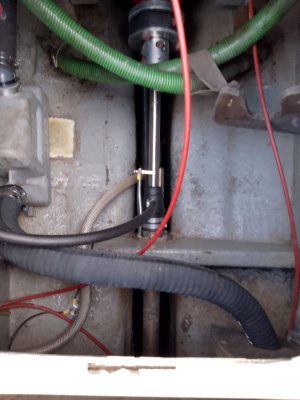Tranona
Well-known member
Yes, very simple. Through hulls do not meet the conditions where galvanic action is possible so introducing an anode does nothing. Galvanic action occurs when two metals with different potential are in contact with eachother in an electrolyte (seawater). Through hulls are one metal in contact with GRP (although not actually in direct contact asa bedded in sealant). The "bonding" comes from a time of ignorance and because it was "cautious" higher class builders who did it thinking it was a good thing some are reluctant to accept it does nothing. Same with the anode on your rudder unless possibly it is bonded to the bronze heel fitting that might be secured by stainless bolts. Even then although the two metals might have different potential they are usually well isolated by being bedded in sealant so not in direct contact there is no possibility of galvanic action. Your hull anode will be bonded to the shaft, probably through the gearbox housing and coupling. Alternatively it may have a direct connection to the shaft as on my boat shown in the photos.
There is no pressing need to remove the bonding of the through hulls as it is not doing anything good or bad. However I believe it may also be bonded to the engine or the DC circuits which can be bad. Well publicised case here and in the mags about 15 years ago where a sister ship of yours had its through hulls replaced and the bonding wire incorrectly attached to the positive of the DC. This created a circuit and the through hulls gently fizzled away. Fortunately the owner was on board sailing it and noticed the smell. Boat was lifted just in time before the through hulls disintegrated.
So choice is yours. It has not been a problem for the decades the boat has been in service, but is unnecessary.
There is no pressing need to remove the bonding of the through hulls as it is not doing anything good or bad. However I believe it may also be bonded to the engine or the DC circuits which can be bad. Well publicised case here and in the mags about 15 years ago where a sister ship of yours had its through hulls replaced and the bonding wire incorrectly attached to the positive of the DC. This created a circuit and the through hulls gently fizzled away. Fortunately the owner was on board sailing it and noticed the smell. Boat was lifted just in time before the through hulls disintegrated.
So choice is yours. It has not been a problem for the decades the boat has been in service, but is unnecessary.


